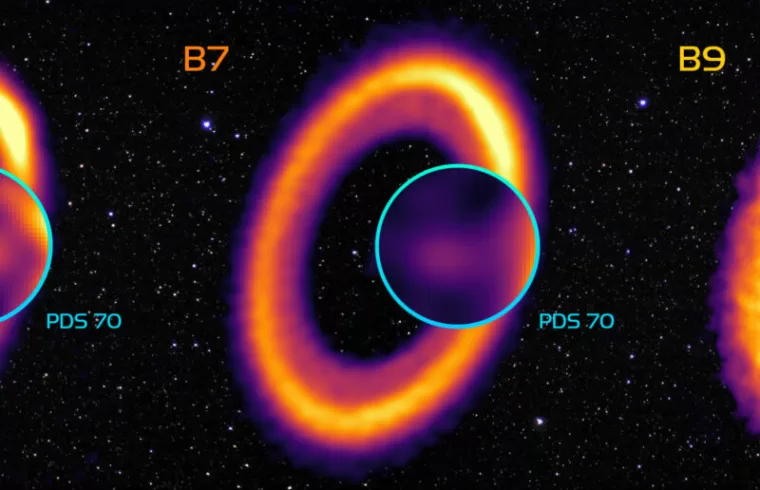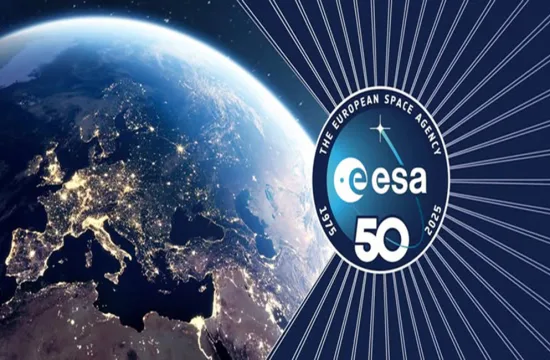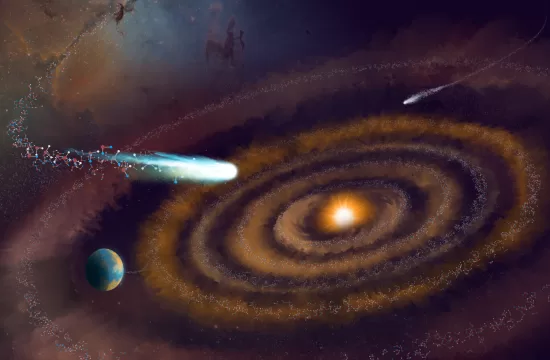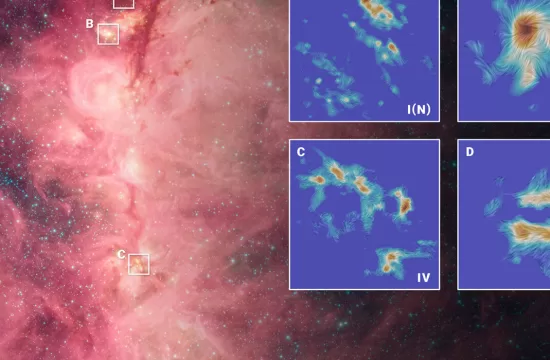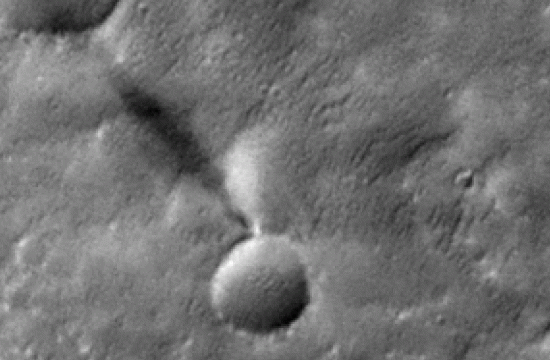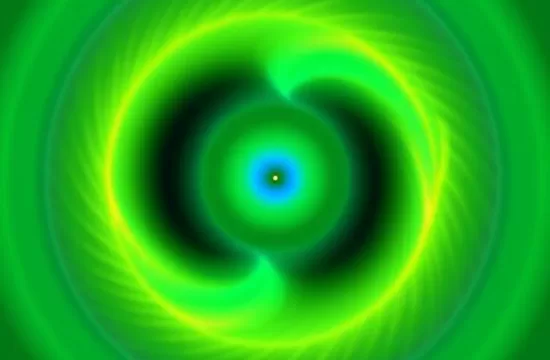Astronomers have captured an unprecedented multi-frequency view of a forming planet in the nearby star system PDS 70, challenging long-held assumptions about how young planets evolve.
The research, led by postgraduate student Oriana Domínguez-Jamett from the Universidad de Chile and published in Astronomy & Astrophysics, reveals that the planet PDS 70c emits radio signals not from a dusty disk, as previously believed, but from ionized gas.
Located 370 light-years away in the constellation Centaurus, PDS 70 is a young star known for hosting two directly imaged protoplanets. Among them, PDS 70c has drawn particular interest due to its suspected circumplanetary disk—a ring of gas and dust thought to feed the planet and potentially form moons. Until now, the origin of its radio emissions remained elusive.
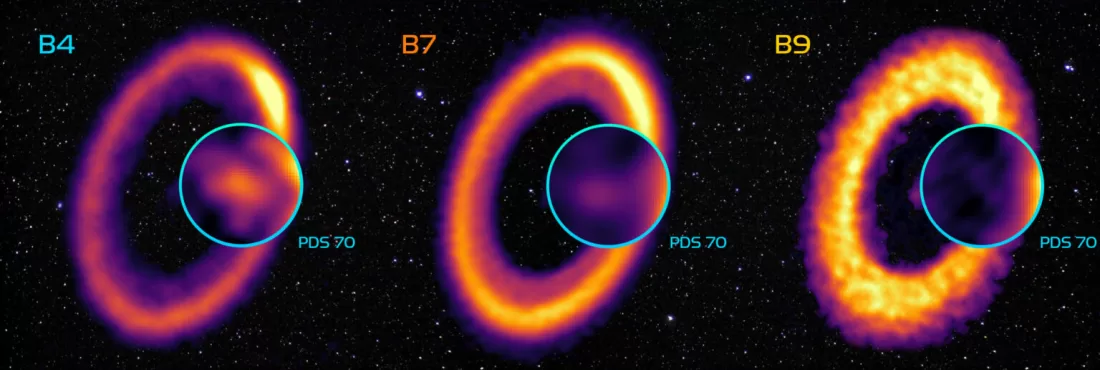
Using the Atacama Large Millimeter/submillimeter Array (ALMA), researchers observed PDS 70c across multiple frequency bands—Bands 3, 4, 7, and 9. While signals were detected in Bands 3, 4, and 7, the absence of emission in Band 9 raised eyebrows. This drop in brightness contradicts the theory that thermal dust is the sole source of the emission.
Instead, the data point to free-free emission—radio waves generated by collisions between electrons and ions. This suggests that the radio light originates from a gaseous disk surrounding the planet, ionized by infalling material and appearing as a faint, glowing veil.
“Our observations suggest that a standard dusty disk does not surround PDS 70c,” said Domínguez-Jamett. “The signal points to ionized gas, possibly heated in shocks as material falls onto the planet’s disk. This means the planet is depleted of dust by at least a factor of a thousand compared to expectations.”
By comparing the spectrum with theoretical models, the team demonstrated that even a low ionization fraction could explain the observed emission turnover. This marks the first time the radio emission mechanism in a circumplanetary environment has been clearly identified.
“This is a breakthrough in our ability to study how gas giant planets grow and how their moons may form,” said Simon Casassus, Domínguez-Jamett’s advisor. “ALMA can now not only detect circumplanetary disks but also determine what powers their emission.”
John Carpenter, ALMA Observatory Scientist, added, “By distinguishing between dust and gas emission, we gain a direct view of how young planets gather material and how future moon systems begin to form.”
The findings offer new constraints on the density, temperature, and ionization state of material around forming gas giants. More broadly, they underscore ALMA’s unique capability to explore the final stages of planet formation—shedding light on the birthplaces of future planetary systems.

